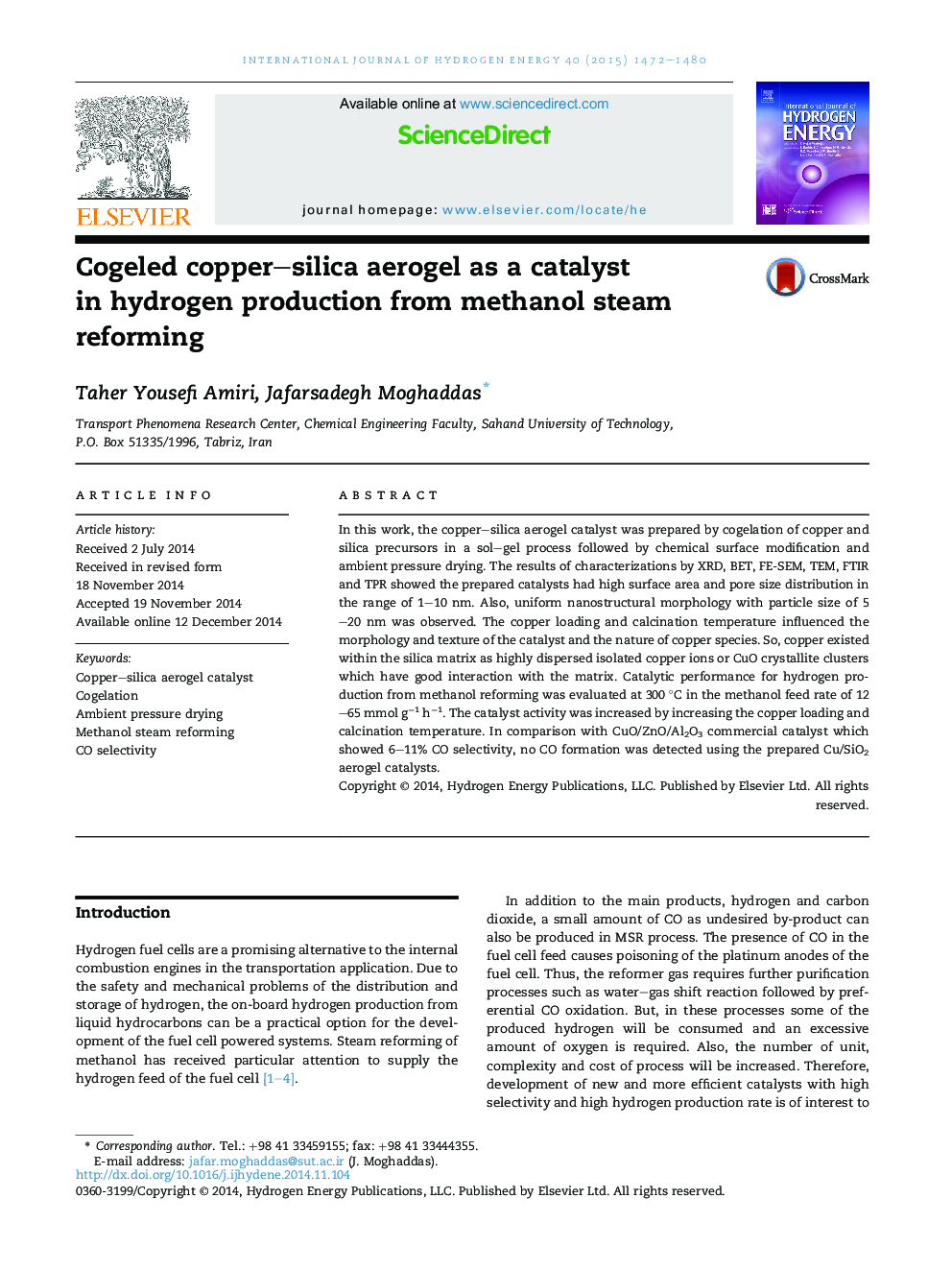| Article ID | Journal | Published Year | Pages | File Type |
|---|---|---|---|---|
| 1270133 | International Journal of Hydrogen Energy | 2015 | 9 Pages |
•Using the sodium silicate instead of costly and hazardous silicon alkoxides.•Using the safer and lower energy consuming ambient drying instead of supercritical drying.•Nanostructure, large surface area, highly dispersed active phase.•High activity and no CO formation in the steam reforming of methanol.
In this work, the copper–silica aerogel catalyst was prepared by cogelation of copper and silica precursors in a sol–gel process followed by chemical surface modification and ambient pressure drying. The results of characterizations by XRD, BET, FE-SEM, TEM, FTIR and TPR showed the prepared catalysts had high surface area and pore size distribution in the range of 1–10 nm. Also, uniform nanostructural morphology with particle size of 5–20 nm was observed. The copper loading and calcination temperature influenced the morphology and texture of the catalyst and the nature of copper species. So, copper existed within the silica matrix as highly dispersed isolated copper ions or CuO crystallite clusters which have good interaction with the matrix. Catalytic performance for hydrogen production from methanol reforming was evaluated at 300 °C in the methanol feed rate of 12–65 mmol g−1 h−1. The catalyst activity was increased by increasing the copper loading and calcination temperature. In comparison with CuO/ZnO/Al2O3 commercial catalyst which showed 6–11% CO selectivity, no CO formation was detected using the prepared Cu/SiO2 aerogel catalysts.
